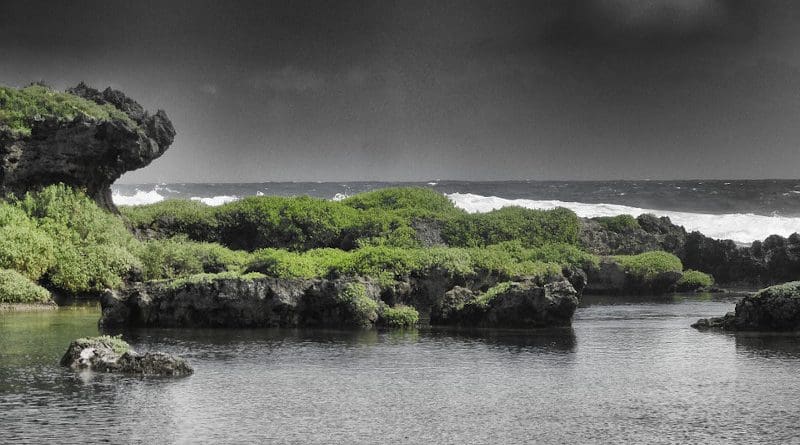Guam Faces More Heat, Stronger Storms, Water Shortages From Climate Change
Hotter weather, risks to freshwater supplies, coral reef death, and stronger typhoons are among the major challenges detailed in a new report on climate change in Guam. Threatened resources include high-value coastal infrastructure and the millions of dollars that ocean ecosystems add to Guam’s economy annually, according to the report by the Pacific Islands Regional Climate Assessment (PIRCA), a consortium of several government, NGO, and research entities.
Climate Change in Guam: Indicators and Considerations for Key Sectors is one in a series of new PIRCA reports. Authors from the University of Guam and the East-West Center—along with more than 30 technical contributors from local governments, NGOs, researchers, and community groups—collaboratively developed the Guam PIRCA report.
“Climate change is one of the greatest issues this generation is facing, and how we adapt as an island should be based on the best available information and sound science,” said Guam Governor Lou Leon Guerrero. “We are pleased to have this resource to better inform policy and decision-making, so that we may safeguard our critical infrastructure, protect our economy, improve food security, and prepare for increased droughts and wildfires. That is why I have created a Climate Change and Resiliency Commission to provide a strategy for Guam to address the impacts of climate change to our island.”
Key Messages
Climate Change in Guam lays out the changes Guam is already experiencing, as well as what lies ahead. The key messages for decision-makers include:
- Temperatures have risen in Guam, and hotter days and nights affect human health. Heat waves can exacerbate a range of pre-existing health issues, and hot weather poses a particular threat to children and elderly people.
- Stronger tropical storms and typhoons are expected globally and around Guam. More intense tropical cyclones that pack higher wind speeds and more rainfall mean a greater potential for loss of life and damage from these storms.
- Freshwater supplies are at risk. Already, droughts periodically deplete water sources in southern Guam. The combination of possible increased demand for water in hotter weather, more frequent drought, and sea level rise threaten to bring saltwater contamination into wells in northern Guam that supply drinking water.
- Sea level rise threatens infrastructure, including housing and transportation, as well as ecosystems and cultural sites. A 2019 vulnerability assessment forecast that rising sea levels will expose at least 58 percent of Guam’s infrastructure to periodic flooding during this century. Guam and other Pacific Islands will experience sea level rise higher than the global average.
- Oceans are warming, causing coral bleaching that is already widespread and severe. Extensive coral loss is possible within the next few decades if current trends in rising ocean temperatures continue. Coral reefs provide habitat for fish, coastal protection from storms, and inject hundreds of millions of dollars annually into the local economy.

